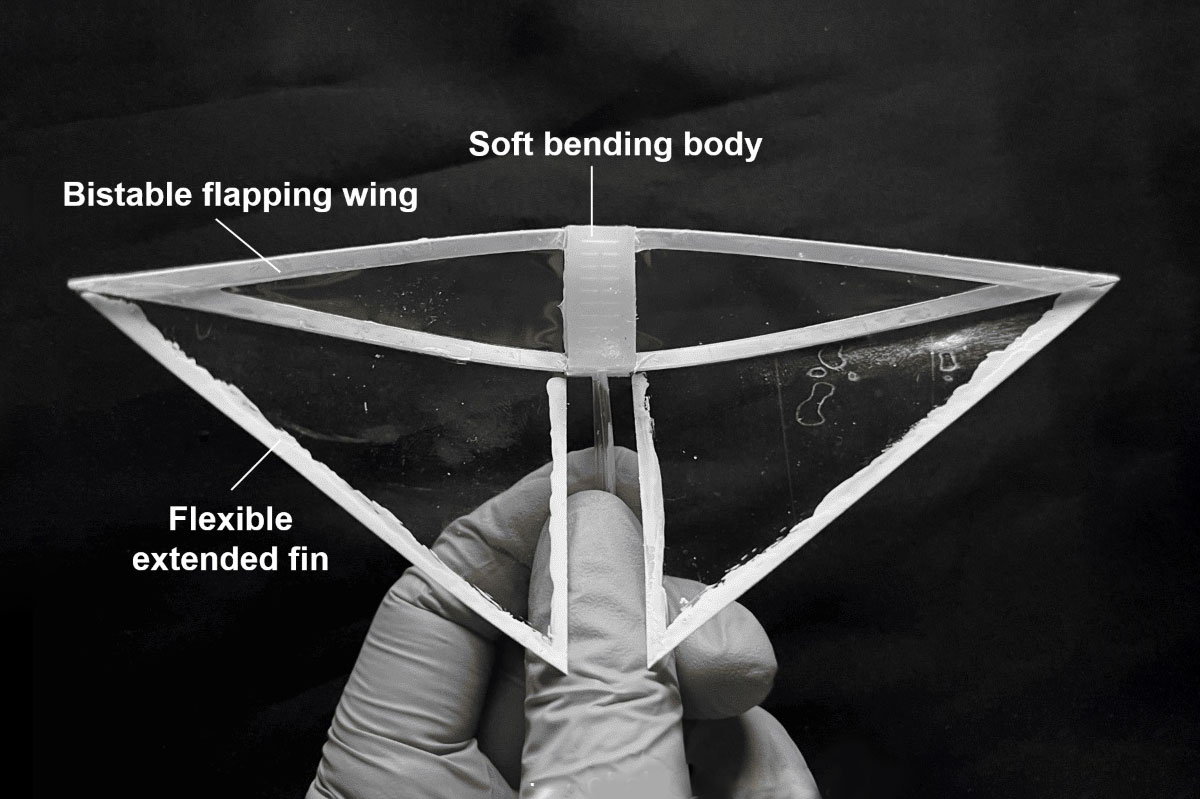
To date, soft swimming robots have not been able to swim fast than one body length per second. However, marine animals, such as manta rays, are able to swim much faster and much more efficiently.
Now, inspired by the biometrics of the manta rays, researchers from North Carolina State University have developed an energy-efficient soft robot that can swim more than four times faster than previous swimming soft robots. The fast and efficient soft robotic swimmers are called “butterfly bots” because their swimming motion resembles the way a person’s arms move when they are swimming the butterfly stroke.
The team developed two types of butterfly bots. One was built specifically for speed and was able to achieve a high average swimming speed of 3.74 body length per second, close to five times faster than the fastest similar soft swimmers. The other one was designed to be highly maneuverable and capable of making sharp turns to the right or left. This maneuverable prototype was able to reach speeds of 1.7 body lengths per second.
“Researchers who study aerodynamics and biomechanics use something called a Strouhal number to assess the energy efficiency of flying and swimming animals,” says Yinding Chi, first author of the paper and a recent Ph.D. graduate of NC State. “Peak propulsive efficiency occurs when an animal swims or flies with a Strouhal number of between 0.2 and 0.4. Both of our butterfly bots had Strouhal numbers in this range.”
Weighing only 2.8 grams, the butterfly bot has a soft body and a pair of bistable flapping wings. The wing is similar to a snap hair clip, which is stable until you apply a certain amount of energy (by bending it). When the amount of energy reaches a critical point, the hair clip snaps into a different shape – which is also stable.
In the butterfly bots, the hair clip-inspired bistable wings are attached to a soft, silicone body. The soft body can bend up and down, driven by pressurized pneumatic air, which consequently drives the fast flapping of the wings via snapping.
“Most previous attempts to develop flapping robots have focused on using motors to provide power directly to the wings,” Yin says. “Our approach uses bistable wings that are passively driven by moving the central body. This is an important distinction because it allows for a simplified design, which lowers the weight.”
The faster butterfly bot has only one drive unit – the soft body – which controls both of its wings. This makes it very fast but difficult to turn left or right. On the other hand, the maneuverable butterfly bot essentially has two drive units, which are connected side by side. The design allows users to manipulate the wings on both sides or to flap only one wing, which is what enables it to make sharp turns.
“This work is an exciting proof of concept, but it has limitations,” Yin says. “Most obviously, the current prototypes are tethered by slender tubing, which is what we use to pump air into the central bodies. We’re currently working to develop an untethered, autonomous version.”
Journal reference:
- Yinding Chi, Yaoye Hong, Yao Zhao, Yanbin Li, Jie Yin. Snapping for high-speed and high-efficient butterfly stroke–like soft swimmer. Science Advances, 2022; DOI: 10.1126/sciadv.add3788
Butterfly bot is a fast and efficient soft robotic swimmer
Source: Tambay News

0 Comments